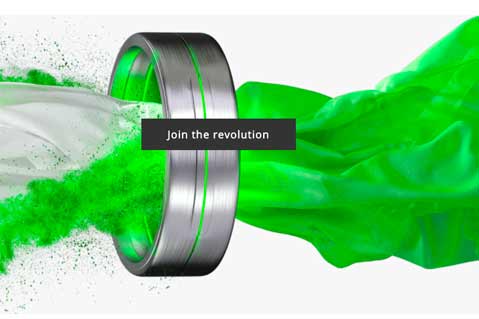June 01, 2017
Toward Greener Apparel: Sustainable Dye & Recovered Yarns
“The textile dyeing industry has made the cloth beautiful, but turned the clean water black.”
So said Sunyun Yao, an official in Shaoxing County, China, back in 2010. There wasn’t much exaggeration in the statement: China’s textile industry has reportedly discharged 2.5 trillion liters of wastewater into its rivers annually, according to a 2012 report from the non-profit Institute of Public & Environmental Affairs.
Sunyun’s observation and the wastewater figures highlight an inescapable fact about the apparel business, to which everyone in the promotional products industry is connected. And that’s this: The traditional process of making fabrics can have a detrimental impact on the environment, devouring water and polluting.
But in recent years, pioneers in the apparel industry have been working to revolutionize the fabric creation process, making it more sustainable. We recently highlighted Spinnova, a start-up in Finland that makes eco-friendly yarns from wood fibers. In doing research for an upcoming Counselor feature article, we also discovered two other companies, DyeCoo and Hilaturas Ferre S.A., whose efforts could help create a greener – and even more profitable – apparel industry in the decades ahead.

DyeCoo is a Dutch company that uses reclaimed CO₂ instead of water in a patented process to dye textiles. With DyeCoo’s method, no process chemicals, water or wastewater is required, which means wastewater treatment isn’t needed. Rather, the Dutch innovators employ CO2 reclaimed from existing industrial processes as part of a closed loop system to infuse vibrant colors into textiles using 100% pure dyes. “Short batch cycles, efficient dye use, (and) no wastewater treatment all contribute to significantly reduced operating costs,” DyeCoo says.
Apparently, the company is on to something: Nike, Adidas and Peak Performance have products featuring DyeCoo technology. “We are convinced that this trend will continue as more and more brands will increase their demand,” the company says.
In Spain, Hilaturas Ferre S.A. is upcycling textile waste into recycled yarns. The company cuts the waste into consistent smaller pieces and then shreds it to reclaim the longest possible fibers. From there, a “colorblend” process enables consistent color-matching of cotton fibers without the use of dyes. A finishing process involving the infusion of carrier fibers and spinning results in high-quality, color-correct yarns that are used to make apparel, accessories and home textiles. Through its “Recover” process, Ferre saved 42.3 billion liters of water, 6.8 million pounds of pollutants, and 130 million pounds of CO2 emissions in 2016 – numbers verified by Universitat de València and UNESCO. (Yowzers!)

While such sustainable products and processes are not yet the standard, apparel industry insiders expect them to become more pervasive. One day, promo apparel suppliers say, sustainable apparel could become a strong selling point in the branded merchandise industry, which has already experienced a rise in eco-friendly items, such as shirts made from recycled plastic bottles. “The emphasis on sustainability is going to grow,” says Andrea Lara Routzahn, senior VP of portfolio and supplier management at Top 40 supplier alphabroder (asi/34063). “Millennials are gaining greater buying power, and they’re not walking away from sustainability.”

Product Hub
Find the latest in quality products, must-know trends and fresh ideas for upcoming end-buyer campaigns.